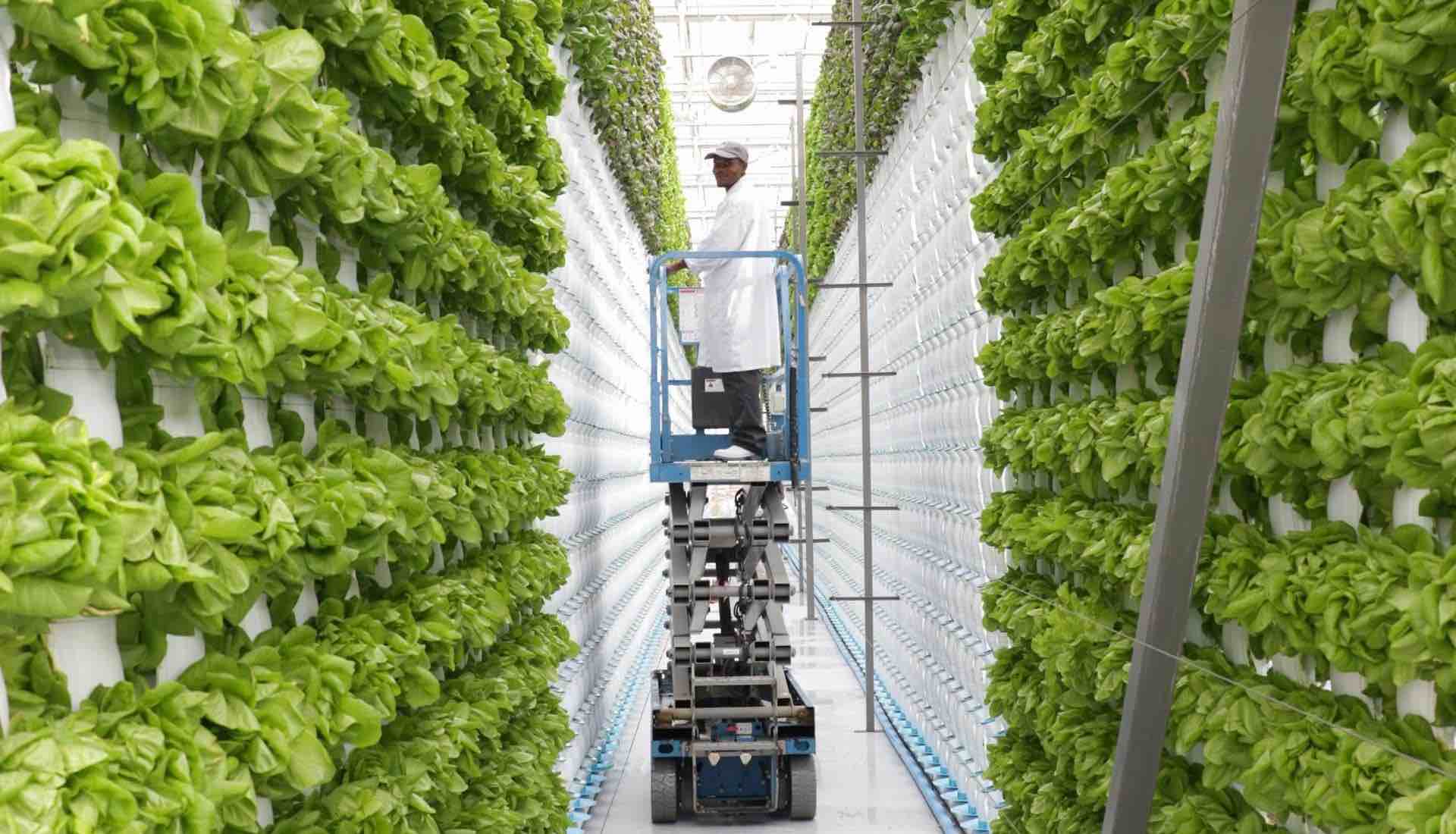What is Vertical Farming and what are the benifits?
By Director – Josh Ball · · 4 min read
Traditional agriculture has served humanity for centuries, but a new approach to food production is developing to tackle the challenges of a growing global population, urbanisation, and environmental changes.
Vertical farming, an innovative and sustainable method, has emerged as a
game-changer in agriculture. In this blog post, we will explore the concept of vertical farming, how it works, and the remarkable benefits it offers to address the pressing issues of our time.

Image soucre: Climate Champions
What is Vertical Farming?
Vertical farming is an agricultural technique that involves growing crops in vertically stacked layers or towers within controlled indoor environments. Instead of sprawling across vast land areas, crops are cultivated in high- rise buildings, warehouses, or specially designed-structures. This method employs hydroponics, aeroponics, or aquaponics systems, which provide plants with the necessary nutrients, water, and lighting for optimal growth.
Benifits of Vertical Farming
Maximising Space Efficiency: Vertical farming allows for the efficient use of space by stacking crops vertically. This approach significantly increases the cultivation area compared to traditional farming, enabling higher crop yields per square foot. This is perfect for urban areas where free land is not in abundance.
Year-Round Crop Production: Unlike traditional farming, which is often seasonal and dependent on weather conditions, vertical farming provides a controlled environment for year-round crop production. By manipulating temperature, humidity, and light, farmers can create optimal conditions for plant growth, resulting in consistent harvests throughout the year.
Resource Conservation: Vertical farming is designed to be highly resource-efficient. Through the use of recirculating hydroponic or aeroponic systems, water usage can be reduced by up to 90% compared to conventional agriculture. Additionally, the controlled environment minimises the need for pesticides and herbicides, further reducing environmental impact. Moreover, vertical farms can be powered by renewable energy sources, ensuring sustainable operations.
Reduced Environmental Footprint: Vertical farming has the potential to reduce the environmental impact associated with traditional agriculture
significantly. Due to the lower requirement for land, there is no need for large-scale land clearing, which helps preserve natural habitats and biodiversity. Additionally, vertical farms can be integrated into urban areas, reducing the carbon emissions generated by long-distance transportation of food.
Vertical farming represents a promising solution to the challenges faced by traditional agriculture in an increasingly urbanised and resource-constrained world. With its ability to maximise space, conserve resources, reduce the environmental footprint, and deliver fresh, high-quality produce year-round, vertical farming has the potential to revolutionise how we grow and consume food.
Check out all of our posts!
COCHUJANG & POTATO SLAB FRITTATA
Gochujang & Potato Slab FrittataBy Director - Josh Ball · Last updated Friday, 22 September 2023 · 2 min readCheck out all of our posts!<< Back to blog
MUSHROOM & CORN TACOS
Mushroom & Corn TacosBy Director - Josh Ball · Last updated Thursday, 14 September 2023 · 2 min readCheck out all of our posts!<< Back to blog
MANDARIN & POPPY SEED UPSIDE DOWN CAKE
Mandarin And Poppy Seed Upside Down CakeBy Director - Josh Ball · Last updated Tuesday, 7 September 2023 · 2 min readCheck out all of our posts!<< Back to blog
DOBBERS 15 MINUTE PUMPKIN SOUP
Dobbers 15 Minute Pumpkin SoupBy Director - Josh Ball · Last updated Tuesday, 29 August 2023 · 2 min readCheck out all of our posts!<< Back to blog



